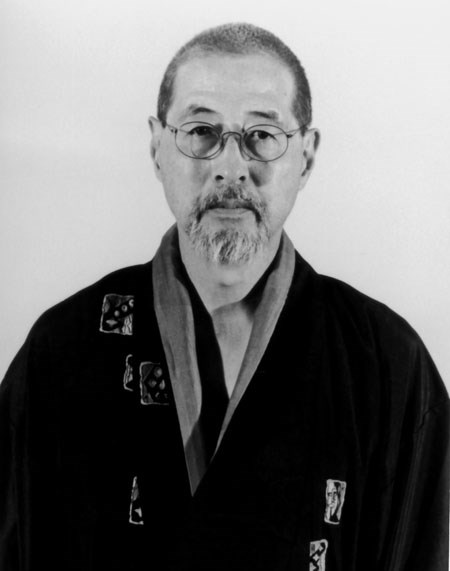 |
| Patrick Nagatani (courtesy Patrick Nagatani) |
Patrick Nagatani was fated to become a photographer. Thirty-one years ago, at age 31, he signed up for a drawing class at Santa Monica City College, in Los Angeles. He had a technical illustration background, so his drawing is very precise. He tells this story about the experience:
"I was the hit of the class because I duplicated everything so beautifully. Then one day Gerry, my instructor, took me aside and showed me some Cezanne slides. He showed me one painting of a ladder and asked, 'What's wrong with this ladder?'
" 'It doesn't look like it will hold anything,' I answered.
"Then he asked, 'Why do you think he painted it like this?' and I began to understand about the nature of art, how it expresses ideas about things. He told me that since I reproduced everything like a camera, that I should use a camera for future assignments. I started my photography then and never looked back."
Although Mr. Nagatani never had a formal technical photo class, from 1975 to 1983, he "sponged everything photographic," taking photographic theory class and reading everything he could about the technical aspects of photography. In 1983 he realized that he had accumulated quite a bit of knowledge but needed to explore more about its relationship to the art world. He wanted to find photography's place in the art world.
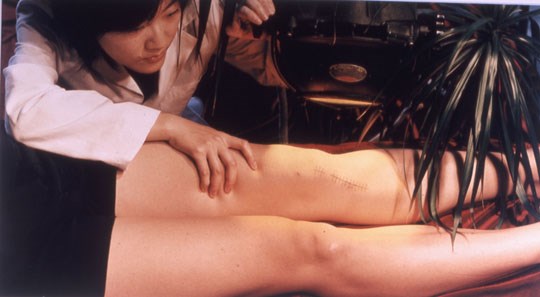 |
| Dr. Ting, ACL, Meaghan, 2005 (courtesy Patrick Nagatani) |
"It's mostly the way photography can talk about time, about sciences as a tool for documentation....how it plays a role in mass media and culture and the way people look at pictures." Mr. Nagatani does not take "candid" shots. Instead, he sets up scenes, arranging his subjects the way he says a director arranges a movie set and the actors on it.
"I create moments. I like photography's ability to do that."
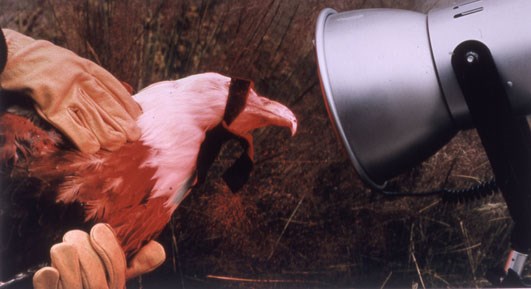 |
| Bald Eagle, 2004 (courtesy Patrick Nagatani) |
Mr. Nagatani's interest in chromotherapy, or healing with colored light, emerged almost inevitably from his new vocation. He had been painting rooms in different colors to photograph, and began thinking about the psychological change that occurred in rooms painted in primary and secondary colors.
"I had started to establish myself as a colorist in the field. Colored light was perfect in that the fact that the technical methods are the same as a photographer's. Colored light went to the source."
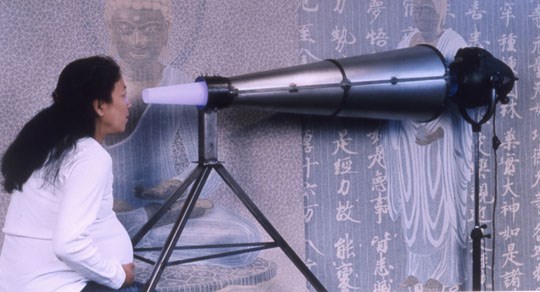 |
| Illumination, 2005 (courtesy Patrick Nagatani) |
Chromotherapy is the practice of healing the body through exposing it to colored lights. Light is pointed at affected points, in order to facilitate healing of afflictions as diverse as jet lag, operation scars, and chronic arthritis. Certain colors are believed to have different healing effects.
In the same passionate way he pursued his knowledge of the camera, Mr. Nagatani spent years gathering information on chromotherapy. "I found that there were several things I had started and wanted to re-engage with. I had a lot of work I'd never shown. The state of the art with color materials was so amazing and my ability as a color printer got better. I said I've got to pursue this. I had a lot of images in mind with a more sophisticated eye and technical ability."
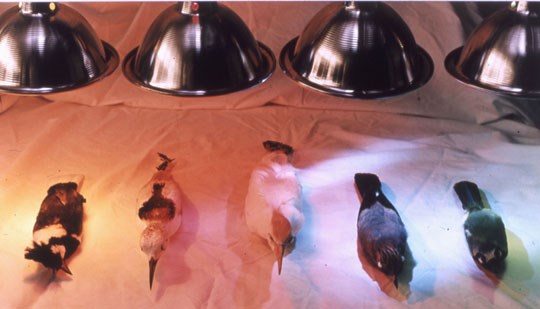 |
| Anechoic Multi-Tonations, 2004 (courtesy Patrick Nagatani) |
There are several things Mr. Nagatani wants his pictures to teach other people: "The idea that there are other possibilities of healing and growth. I had done work on nuclear encampment and Japanese internment camps, and I wanted to take a positive direction. I like the idea of colored lights as a healing tool. It fits in with my fascination with culture. This is a culture interested in growth and healing, and other aspects of health." Mr. Nagatani's recent bout with cancer played a role in his interest in chromotherapy.
"I succumbed to the scalpel knife and all the procedural things, so now my own body is subject matter. Chromotherapy is a beautiful, non-invasive possibility for healing that visually excited me."
Page created on 4/14/2013 2:13:27 PM
Last edited 1/4/2017 9:57:24 PM
